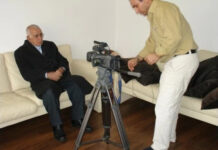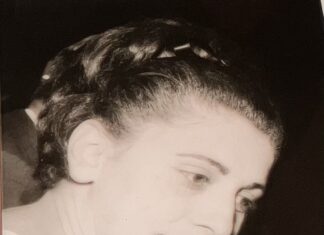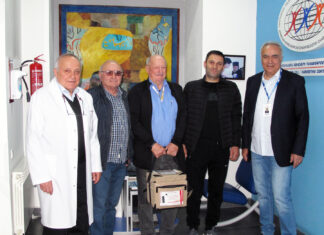By Aram Arkun
Mirror-Spectator Staff
NEW YORK — Garnik Nanagoulian is well known today among Armenians thanks to his position as the executive director of the Fund for Armenian Relief (FAR), which is a part of the Diocese of the Armenian Church of America.
A trim and active-looking man in his mid-50s, Nanagoulian has had an interesting career as a diplomat, serving consecutively the Soviet Union and the Republic of Armenia, before ending up as an American citizen, running one of the Armenian Diaspora’s prominent humanitarian organizations. In an interview in his Manhattan office, he reflected on the many twists his career
took before it led him to FAR.
Nanagoulian’s family background turned out to be a useful preparation for a diplomat, and in particular helpful for understanding and communicating with Armenians of different cultural backgrounds. His father emigrated from Karabagh, and his mother from Tbilisi, to Yerevan, where they studied at the university level and formed a family. Nanagoulian absorbed first-hand the proud and tough mountaineer heritage of the Karabagh Armenian, and the cosmopolitan and cultivated cultural heritage of the Tblisi Armenian. Later, he married a schoolmate of his who had emigrated from the third major Armenian center of the Caucasus — Baku.
In college, Nanagoulian studied physics, and after graduation in 1975 worked at a research and development institution for the defense industry. He also taught physics and mathematics at the high school level. At the same time, active in the political and
social life, he soon went to work for the central committee of the Komsomol (Communist Union of Youth) of Armenia in 1978. This proved to be a useful avenue for career advancement. He headed the department of youth in science.
His next step was to study in Moscow in the famous Soviet diplomatic academy. With a smile, Nanagoulian declared that as a child his dream was to either become a second Einstein or a diplomat; since the former was not possible, he chose the latter. He also felt that he would enjoy dealing with people and that becoming a diplomat would open many more doors than the academic world. Nanagoulian graduated in 1985 with honors and proceeded to work in Smolenka, the Soviet foreign ministry building in Moscow.









